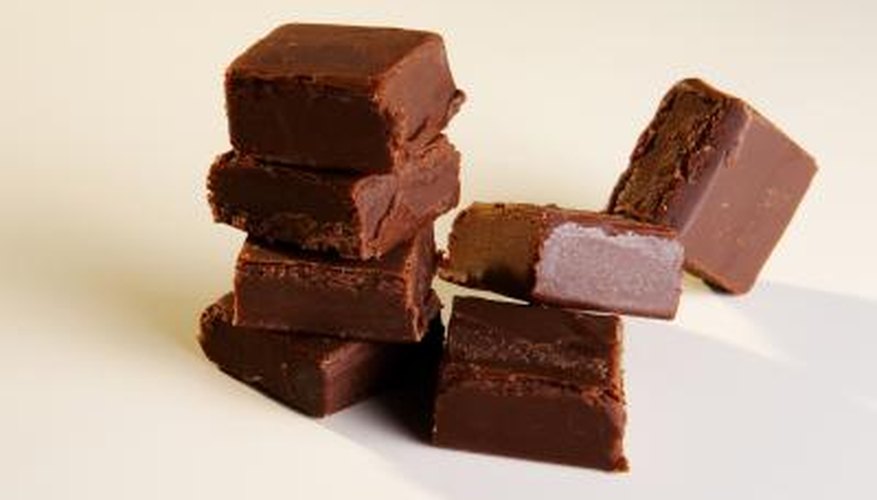Making fudge is an exact science. Following the recipe exactly as written is vital for the fudge to come out right and create a smooth and sweet treat. Among the considerations is the type of pan used for cooking and cooling the fudge. The wrong pan can result in scorching, burning or a poorly executed fudge recipe.
Saucepan
The saucepan is the main pan used in making fudge. The website All Recipes suggests a heavy sided saucepan which is twice the volume of the materials used in the recipe. The website points out that the heavy sided pan helps prevent scorching whereas a thinner pan has the potential to scorch and burn the fudge. The website From Karen's Kitchen suggests using a pan which is large enough to hang a thermometer in and keep it from touching the bottom for temperature sensitive fudge recipes.
- The saucepan is the main pan used in making fudge.
- The website From Karen's Kitchen suggests using a pan which is large enough to hang a thermometer in and keep it from touching the bottom for temperature sensitive fudge recipes.
Best Pan Material
For the cooking process, the ideal material for the saucepan is stainless steel. Materials like cast iron do not heat or cool at the same rate of speed, which can affect the recipe and ruin the fudge.
Cooling Pan
A baking pan of any type is ideal for cooling. Usually, a square shaped pan is used, but the baking pan is primarily for cooling and any baking pan is appropriate. Depending on the recipe suggestions, the pan is either greased with butter directly or lined with waxed paper.
Troubleshooting
The pan is not the only potential problem which might affect fudge. Fudge requires exact measuring, should not have a doubled recipe and should not be made on days with high humidity levels. Any mistake in measuring, doubling or humidity can result in poor fudge, scorching or problems which seem pan related.
